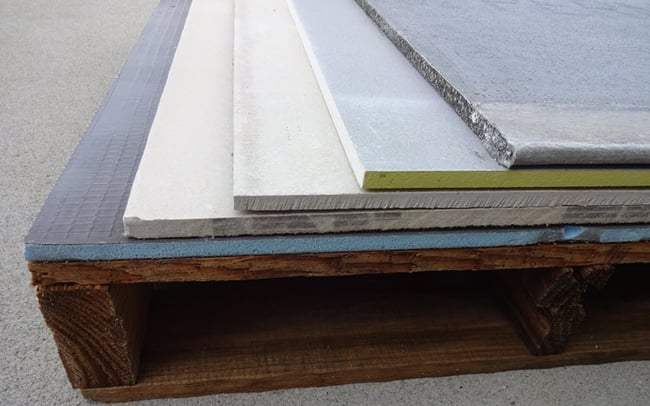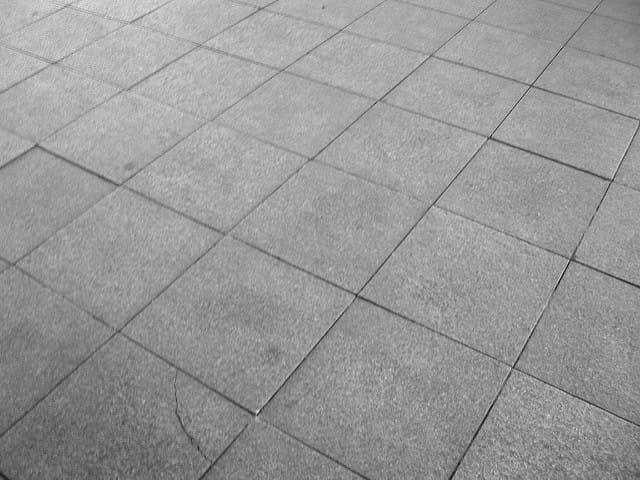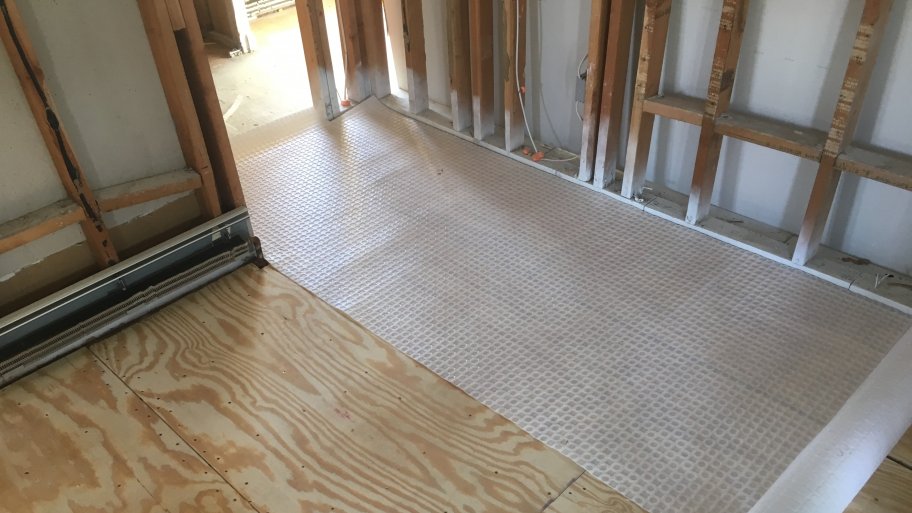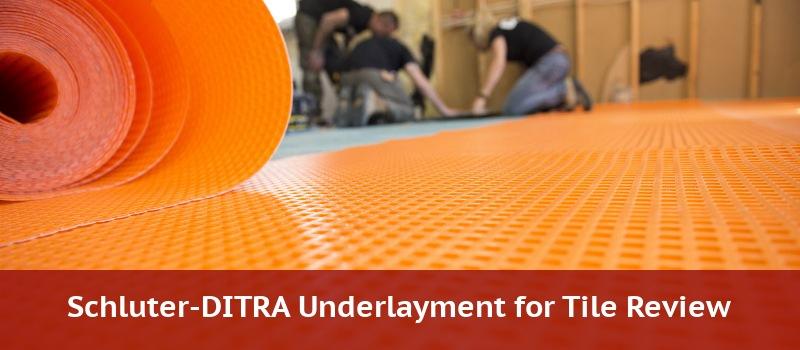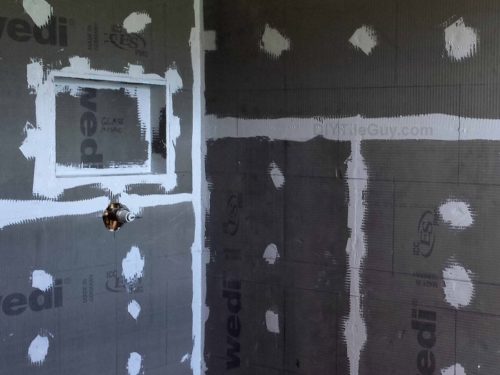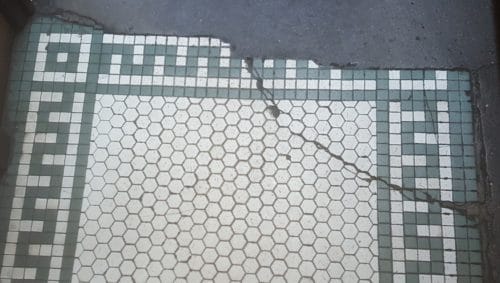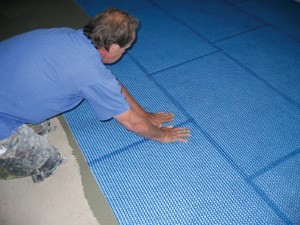Backer board is a thin layer of concrete that has fiberglass mesh on its sides and is used under the tile to provide a firm and even surface for the tile to adhere to.
Tile underlayment membrane vs backer board.
Georgia pacific s densshield is one such product.
Two common types of underlayment are ditra a flexible plastic decoupling membrane explained later and cementitious backer units also known as cbus cement board or cement backer board.
Concrete backer board has a solid concrete core and both sides are faced with fiberglass.
The facing serves as an integrated waterproofing membrane so you don t need to install a separate layer of plastic behind the tile backer or a sheet membrane over the backer.
Custom s fiber reinforced levelquick is another.
It s waterproof which makes it ideal for wet.
Concrete backer board durock and wonderboard which is the standard material for tile underlayment.
You shouldn t add any backer board over the top of it.
Uncoupling membrane cementboard has replaced a manually applied mortar bed to emerge as the standard underlayment for a tile floor.
One type of tile backer board is made with a water resistant facing on both sides of the board.
Secondly once the self leveler is dry you can adhere tile directly to it.
The following backer boards are commonly used for tile flooring in wet or dry areas over wood subfloors.
Ardex liquid backer board is an example of a self leveler that doesn t need reinforcement.
Membrane faced board only.
The question is which will be a more effective sidekick in your fight to keep your floor tile victorious.





